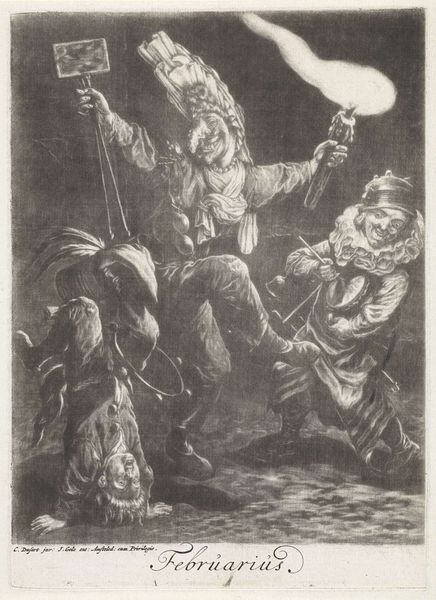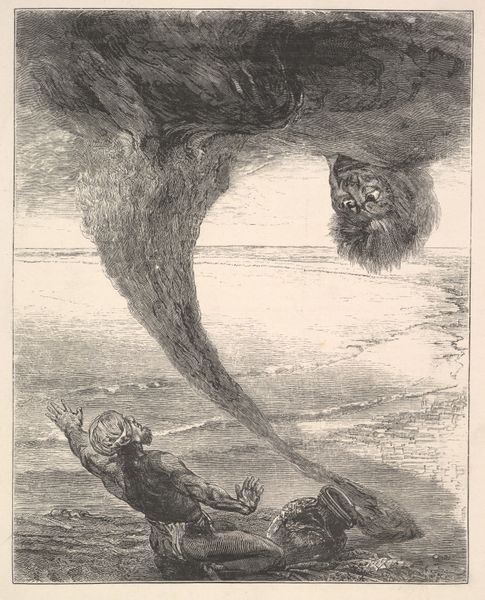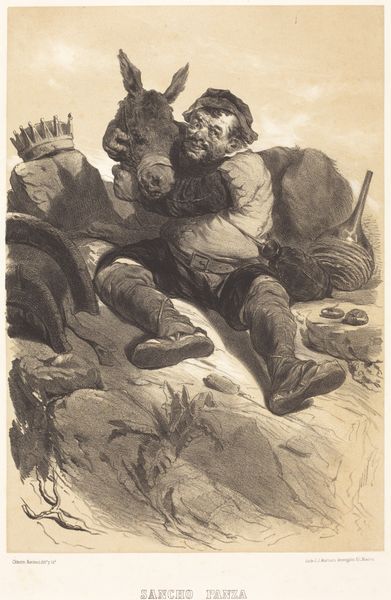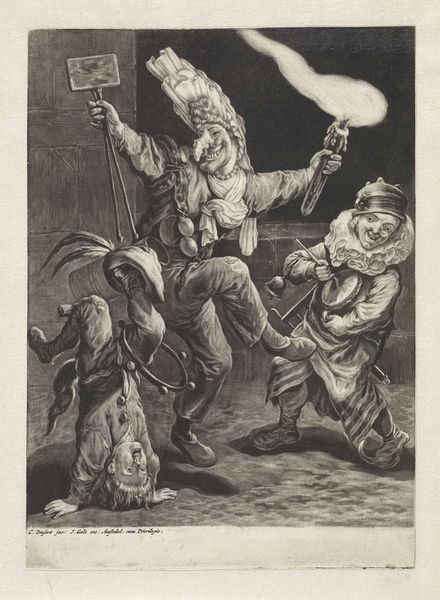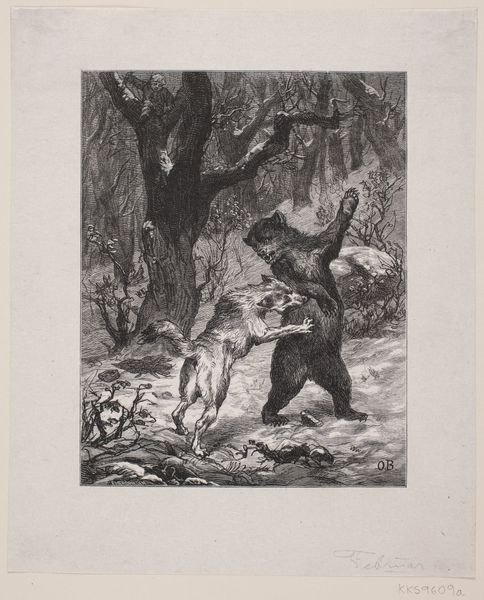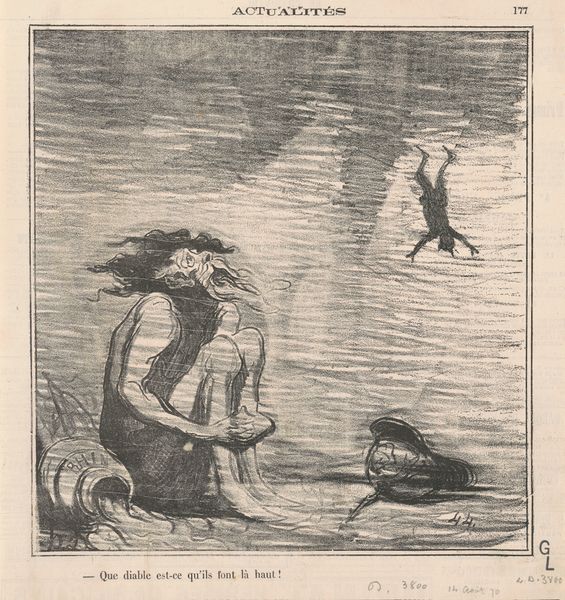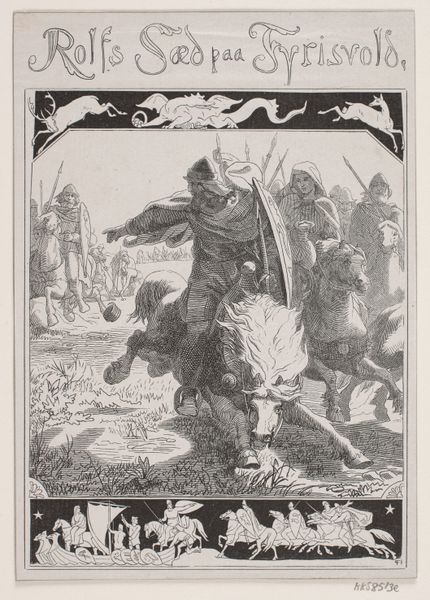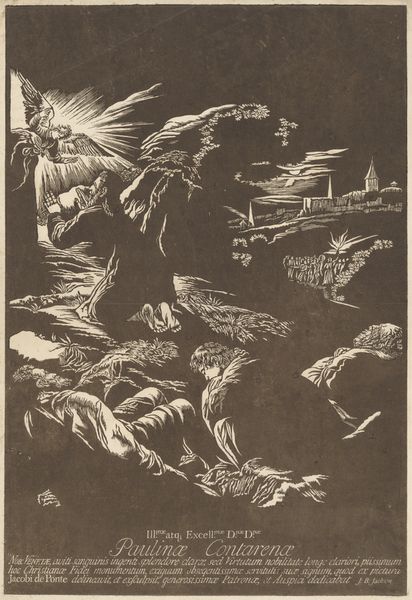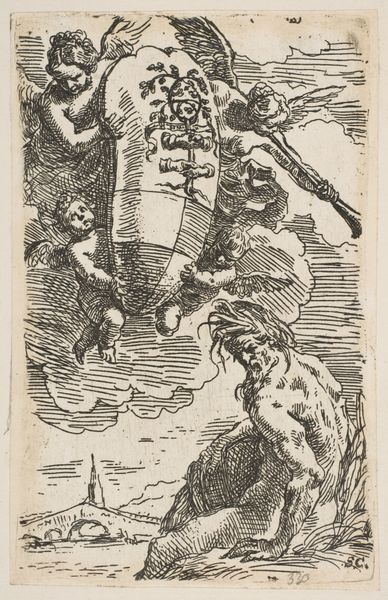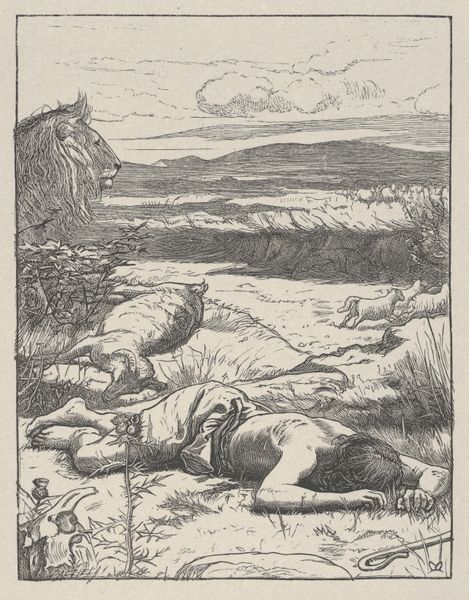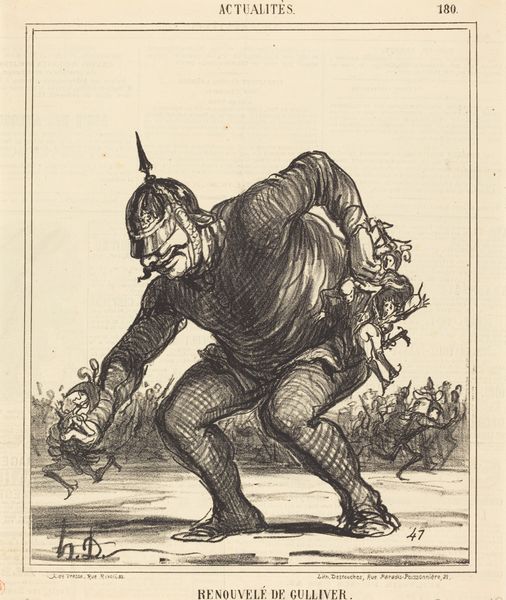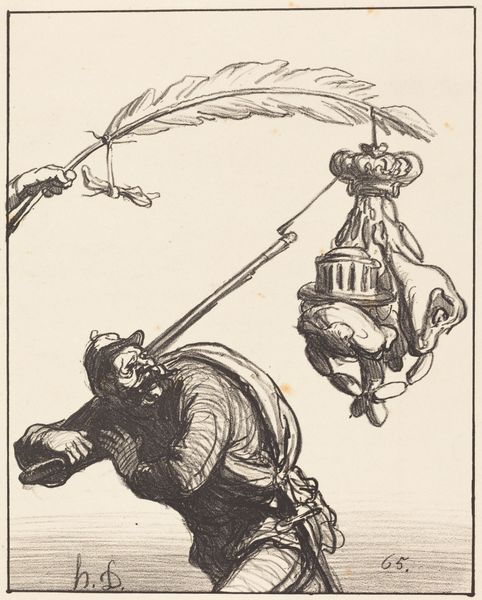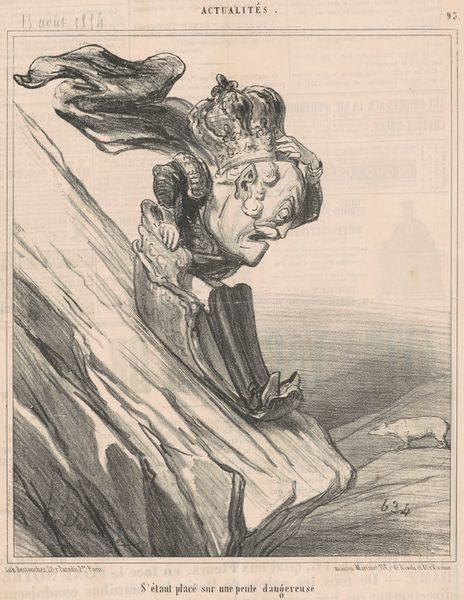
Copyright: National Gallery of Art: CC0 1.0
Curator: Looking at this lithograph by Honoré Daumier, created in 1869 and titled "A l'instar de Pantin," what comes to mind? It's a striking political cartoon, a genre in which Daumier often engaged. Editor: My immediate reaction is a sense of unease. The stark contrast, the way the soldier clutches that lifeless puppet—it speaks of power, but also something deeply unsettling, almost predatory. The scale feels grand, despite it being a print, the emotion is huge. Curator: It's a powerful image, and deliberately so. Daumier used his art to comment on the political climate of his time, particularly the Franco-Prussian War. We see a Prussian soldier here, a symbol of military might, holding a puppet figure, symbolizing perhaps a manipulated state or power. Editor: The bodies littering the ground contribute heavily to that feeling of dread. There's text on those bodies. Saxe and Hanover? It's about the annexation of territories, the human cost of expansion, isn't it? The title seems laced with satire – "like a puppet." Whose strings are being pulled, and who suffers for it? Curator: Exactly. Daumier was a master of visual metaphor. The prone figures represent territories seized by Prussia, a commentary on the war's devastating impact on smaller nations. Notice the way he utilizes light and shadow to amplify the drama. Editor: It’s also important to consider this from a position of protest art, too, right? I mean, we are not viewing art neutrally. It's deeply steeped in Daumier's anti-establishment views. What kind of space was it entering as protest art? Curator: That is key. The print appeared in "Actualités," a publication where Daumier regularly used his caricatures to critique government actions. His work played a vital role in shaping public opinion. Editor: So it really speaks to the powerful role visual culture has to question authority, provoke discussions. It goes beyond just recording history, doesn’t it? Curator: Indeed. Daumier’s lithograph invites us to scrutinize the exercise of power, particularly within socio-political upheaval. He challenges the viewer to question and reflect on events. Editor: Seeing it through a modern lens, its warnings still resonate, especially in an era of misinformation and manipulation. The "puppet" has just become far more technologically advanced. Curator: A point very well-taken, it underscores the enduring significance of Daumier's work. Its a visual representation of historical memory, still applicable today.
Comments
No comments
Be the first to comment and join the conversation on the ultimate creative platform.
